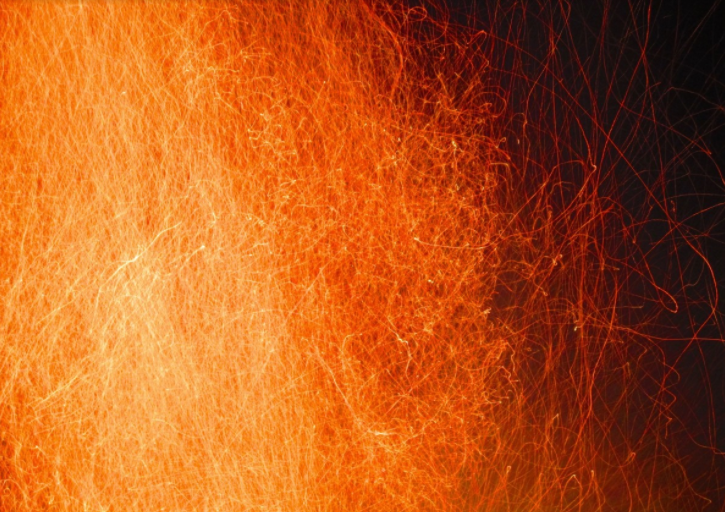The fundamental principles of thermal conduction are outlined by Fourier’s Law. This law states that the rate of heat transfer via conduction through a material is directly proportional to that material’s thermal conductivity (k), cross-sectional area, and temperature gradient. Just as a pressure gradient is the driving force behind any fluid transport, a temperature gradient, or differences in temperature at varying positions within the material, is the primary driving force behind heat transport. The cross-section area is considered for all three dimensions — x, y, and z. Additionally, more complex heat transport processes are not at steady-state, where the temperature gradient varies with time due to accumulation or depletion. For non-steady-state systems, the problem-solving becomes more complex, as time acts as a fourth dependent variable.
The final consideration of Fourier’s Law is thermal conductivity. This is an experimentally determined value that varies depending on the material. Efficient thermal conductors, such as metals, will have a high thermal conductivity and are widely used in heat sink applications and other scenarios where rapid heat transfer is desirable. Conversely, poor thermal conductors, such as plastics and ceramics, are widely used as thermal insulators, for a wide range of applications from residential wall insulation to electronics.
In other words, lattice structures create convenient, direct paths of heat transfer, while disordered structures force heat to travel along circuitous paths.
Thermal conductivities are influenced by several different factors, including temperature, chemical phase, and structure. As previously mentioned, conduction can occur in the three primary phases of matter: solid, liquid, and vapor. In general, solids have better thermal conductivities than liquids, which have better thermal conductivities than vapors. In the absence of convection, air and most other gaseous mixtures are effective insulators. This is because conductive heat transfer is due to molecular interactions. The greater the space between molecules, as vapors have lower densities, the longer it takes for energy to be transferred between molecules and particles. Similarly, lattice structures in some solids help to transfer thermal energy more efficiently. In other words, lattice structures create convenient, direct paths of heat transfer, while disordered structures force heat to travel along circuitous paths.
Scientists at the University of Bayreuth are researching how different degrees of disorder influence the thermal conductivity of nanoparticle powders. The primary consideration for their research is concerned with molecular configuration and structure. Ultimately, scientists were able to determine how the thermal conductivity of a powder is influenced by chaotic configurations.
The first nanoparticle the researchers explored were photonic crystals. These crystals, which are responsible for the glitter appearance on butterflies, are naturally produced by insects but can also be synthesized easily in the lab. The result is very fine and regularly shaped, and collectively possesses a stable structure. These particles, even in an ordered arrangement, have a very low thermal conductivity.
… a binary mixture of mostly small particles with some larger particles would be an appropriate, reproducible method to generate chaos.
Any order in the nanoparticles or any material is associated with higher thermal conductivity. Therefore, the scientists set out to disorder the organized structure of the powder to see if they could manifest a lower thermal conductivity. In photonic crystals (ordered configuration), each particle has roughly twelve other particles in its immediate vicinity. The scientists would therefore have to vary this metric of order to generate the disorder. The greater the disorder the more indirect of a pathway heat will need to take in order to traverse the same distance.
To make the powder more difficult to thermally permeate, the scientists employed both laboratory experiments and computational simulations to mimic potential configuration. Analytical techniques, like scanning electron microscopy (SEM), UV-vis, and optical microscopy, were used to experimentally determine the structures, and the computational technology enabled the researchers to examine in detail several different ways to decrease thermal conductivity. Ultimately, the scientists determined that the best way to generate disorder and improve thermal insulation would be to create a mixture of different sized particles. More specifically, they concluded that a binary mixture of mostly small particles with some larger particles would be an appropriate, reproducible method to generate chaos. In fact, the scientists were able to conclude that the disorder was able to decrease the thermal conductivity of the photonic particles by upwards of 50 percent in comparison to the crystallized, ordered configuration.
It sounds sort of strange to be able to reproduce chaos, but this is key to any scientific process and has several relevant industrial applications. Several fields from manufacturing to computers rely on heat transport specifically even at the micro to nano level to generate safe and effective products. This study certainly provides insight and clarity into the fundamental properties governing heat transport.
Source: 1
Image Source: Px Here
